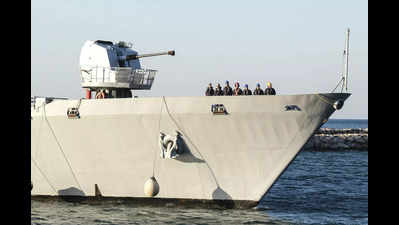
Panaji: While significant improvement was made in the country’s coastal security,
security agencies
are keeping a close watch on new threats and coastal infiltration routes, said Indian Navy officials on Wednesday.
Security agencies are closely monitoring the emerging use of drones as well as the “defence and offence” strategies being employed in ongoing geopolitical conflicts. These learnings, said Commodore Dushyant Purohit, are being used to enhance the country’s security mechanism.
“With technology, almost every decade there is a new threat and a new way to counter it. We are very cognisant of that. There are two wars going on in the world right now. The ways that the defence and offence are happening (in these wars) is being studied, and I think the right lessons will be taken by the concerned agencies,” he said.
Purohit, who was briefing reporters about the ongoing
Sea Vigil maritime exercise
, said that surveillance at sea remains a challenge, particularly the identification of fishing vessels.
“Surveillance is the most important thing in coastal security. We established a coastal radar network after the Mumbai 26/11 attacks, and a lot of improvement happened, but this is also an area of weakness because we do not know 100% what is happening,” said Purohit.
He said the fishing community plays a vital role as the “eyes and ears” of security agencies. “One of the big evolving threats is drones, which is also something we are likely to simulate during Sea Vigil. Drones are capable of causing great damage. Our basic intention is to find out whether the community is able to see an unnatural or unfamiliar object and make a report,” said Purohit.
Sea Vigil began on Nov 12 and ends on Thursday, with 21 agencies and six ministries involved in testing the coastal defence readiness. A coastal security audit was undertaken to identify the capabilities and vulnerabilities in Goa, particularly at fish landing points, jetties, and beaches. A joint team of personnel will now try to simulate an infiltration into the state over a 36-hour period.
“We get a list of vulnerable areas and points from state govt. These are well defended by the respective agency. However, there are always areas that need to be tested, and this is the aim of this exercise,” said Purohit.













 English (US) ·
English (US) ·